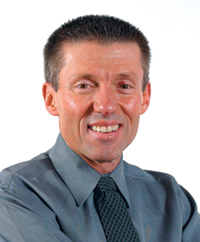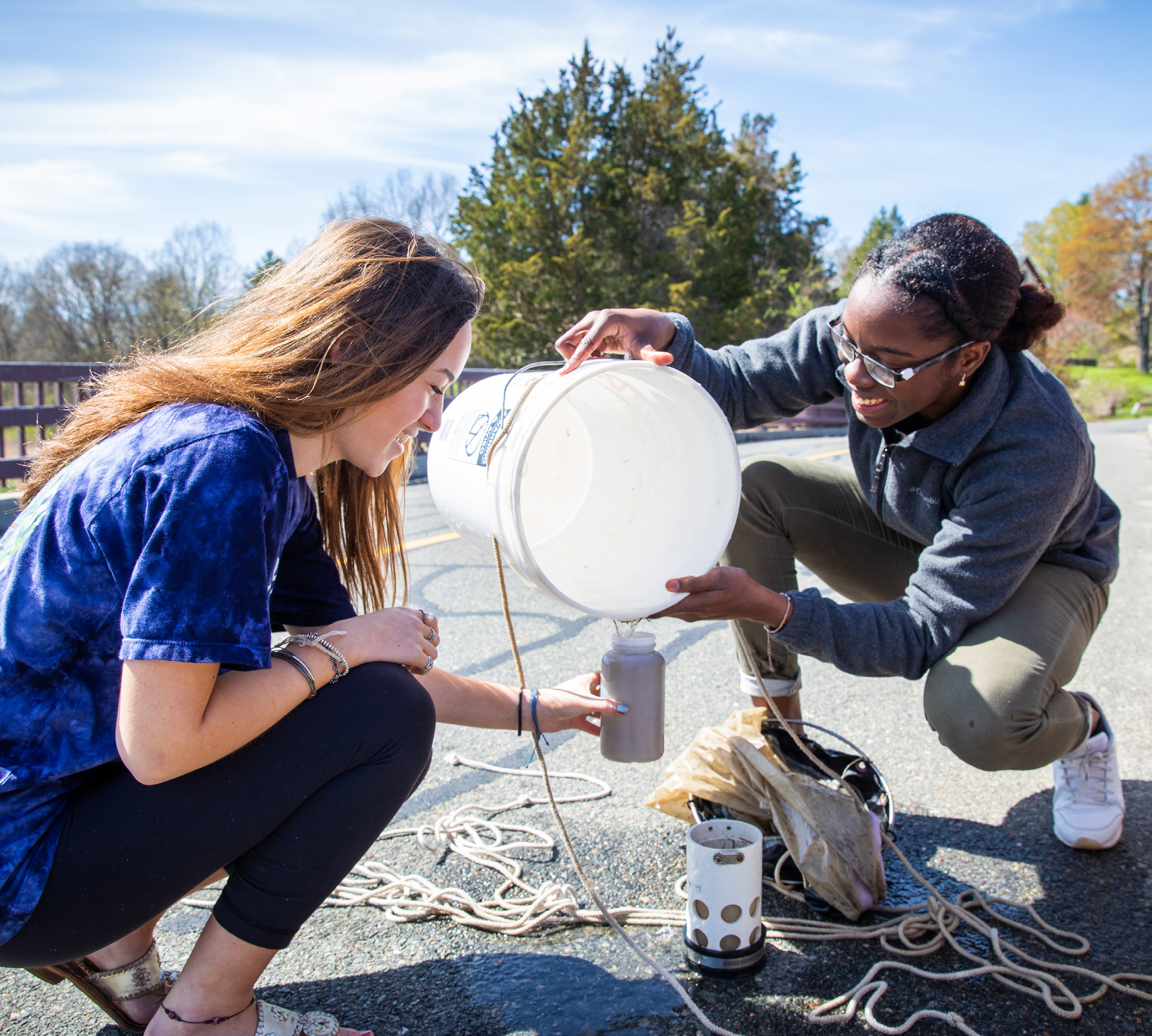Teacher Spotlight
Teacher Spotlight: Steve Metz
Where do you teach? What do you teach? Describe your school, its resources, and anything else that makes it a great place to teach.

Although many readers of The Science Teacher know me as its Field Editor (from 2004 to 2019), I have been teaching high school science at The Governor’s Academy for over four decades. Founded in 1763 at the bequest of Massachusetts Bay Province Governor William Dummer, The Governor’s Academy (nicknamed, “Govs”) is located in Byfield, Massachusetts, thirty-three miles north of Boston. Our beautiful 456-acre campus is bordered by the Parker River and the Great Marsh, a location that provides wonderful opportunities for environmental education and student field research. We have robust courses in environmental science and marine studies, as well as curricular and co-curricular student research projects, independent studies, and internship programs. Currently I teach chemistry, although in the past I have also taught biology and integrated science.
One of the things that makes teaching at Govs so interesting is that we have students from all across the country and around the world. For my students and me, it is great to learn about different cultures and perspectives. Throughout my career I have been a strong advocate for diversity, equity, and inclusion, and it is nice to work at a school where these ideals are valued.
I have served two terms—20 years total—as Chair of the Science Department. My science colleagues are great! They are energetic, knowledgeable, supportive, and enthusiastic. Best of all, they are willing to try new things and they understand that science teaching requires lifelong learning.
What guided you to become a science teacher?
To be honest, I didn’t start out teaching science thinking that this would be my life’s work. Needing to pay back college and graduate school loans, I took my first teaching job in Morristown, New Jersey, and after a second year of teaching in New York City I was hooked. To be sure, those first teaching years were challenging, as they are for most beginning educators. But I also discovered the great rewards of working with young people and getting them excited about science. I love being in the classroom and designing lessons that encourage critical thinking—lessons that hopefully convince even the most reluctant learners of the value of science literacy and evidence-based reasoning.
What challenges have you faced while adjusting to teaching during the pandemic?
The pandemic has been a great challenge for all of us. Our school has bounced from all remote learning last spring, to hybrid classrooms this fall, back to all remote classes during December. Hopefully, we will be back to some manner of in-person learning after the new year. The biggest challenge for me is that I greatly miss the daily face-to-face interactions with my students. The subtle signals from students—Is Jamaal having a rough day? Does Zoe understand this material? Is this cooperative learning group working well together?—all of these are difficult to ascertain when students are wearing masks or participating via a computer screen.
Assessment is also challenging. Early in the pandemic I made the decision to make all my major assessments open-resource. During tests my students can use their textbooks, notes, even the internet. I time the tests so that students do not have enough time to look up everything, and I make special allowances for students who need accommodations like extended time. This has required being intentional about assessments and what I really want students to learn. Clearly, I cannot give tests that focus on memorization and simple recall of information, since students can easily look up answers to these lower-level types of questions. Instead, my assessments focus more on critical thinking and problem solving than on simple recall. This is one silver lining of the pandemic—it has required me to make my assessments authentic and focus on what is truly essential for students to know and be able to do. Of course, this is simply good teaching, whether in a pandemic or in more normal times.
What strategies have you used to make your virtual lessons engaging? What resources have you used, e.g., Flip Grid, etc.?
My Zoom classes have been surprisingly successful. Students have been interested and engaged, perhaps because they are simply happy to finally be in a “classroom” and learning! They seem to enjoy the opportunity to interact with their classmates in breakout groups. I have switched all my classes to Google Classroom, and used interactive EdPuzzle videos to good effect. To provide some laboratory experiences, I have stayed after school and used the weekends to produce videos of laboratory investigations. I was even able to complete some of these inquiries in my kitchen at home! This is not as engaging as when students work in the lab themselves, but it does give them the opportunity to observe and analyze real data collected in the laboratory and think critically about experimental results.
I have tried to use Covid-19 and other current events to make classes more engaging for students. For example, the question of whether the airborne transmission of SARS-CoV-2 virus particles is through droplets or through aerosols—a key question that ultimately determines the efficacy of the 6-foot social distancing rule—provided a good example for a lesson in Brownian motion. The recent presidential election’s state-by-state vote counts and recounts integrated nicely into a lesson on measurement uncertainty and significant digits.
How do you build relationships with your students?
Building relationships is one of the greatest challenges during the pandemic. I try (as much as possible) to provide the same individual attention and personal connection that is such an important part of good teaching in normal times. I check in individually with each student at least once every week, and schedule one-on-one Zoom conferences on a regular basis.
What project/lesson are you most proud of that you implemented throughout your teaching career?
Some time ago I received a multiyear grant to develop and implement an integrated science curriculum. In many ways this project anticipated the Next Generation Science Standards, especially its focus on crosscutting concepts. As project director of this $1M collaboration with Tufts University, I worked with my Govs colleagues to create inquiry-based activities and a thematic curriculum. Program materials were disseminated at NSTA conferences and through summer workshops. I am proud that parts of this program are still being used in classrooms today.

You are an award-winning basketball coach. Can you describe how coaching informs your teaching and vice versa?
All good coaches know that coaching is about teaching more than yelling; all good teachers know that teaching is more about coaching more than telling. I have been privileged to coach some incredibly talented basketball players and win numerous Independent School League and New England Championships. I am proud that many of my players have gone on to play in college, the NBA, and in other professional leagues around the world. I consider myself very fortunate to have had the opportunity to get to know some of the best college and professional coaches, including legendary college coaches like John Wooden (UCLA) and Dean Smith (UNC). They were great coaches because they were great teachers.
My experience in the classroom has made me a better coach; working with athletes has informed my classroom teaching. In both settings I have learned the importance of student autonomy and team-building.
What has been the most important lesson you learned from one of your students during your teaching career?
I feel like I learn something from my students every day. I am always impressed by their energy and resilience, often in the face of difficult personal and family situations.
What is one piece of advice you’d give to first-year science teachers?
You are not alone! Colleagues can be an invaluable resource. Find someone to partner with and bounce ideas off. Your partner does not even need to be a science teacher. I have observed many successful peer partnerships where a science teacher partnered with an English, math, history, or art teacher.
The first year or two of teaching is a challenge for all science teachers. There are the difficulties involved in setting up inquiry-based laboratory investigations and managing them safely, the challenges of explaining complex science concepts and motivating sometimes hesitant learners, and, maybe most importantly, the need to establish caring relationships and a respectful and inclusive classroom community. But remember that what you are doing is incredibly important work, now more than ever. Science teaching is an extremely rewarding career filled with daily surprises and interesting challenges. I can honestly say that the time spent with my students is the highlight of each day. Teaching can sometimes be frustrating, but, at the end of the day, it’s a wonderful life!
Careers Preservice Science Education Teacher Preparation Teaching Strategies High School Pre-service Teachers


